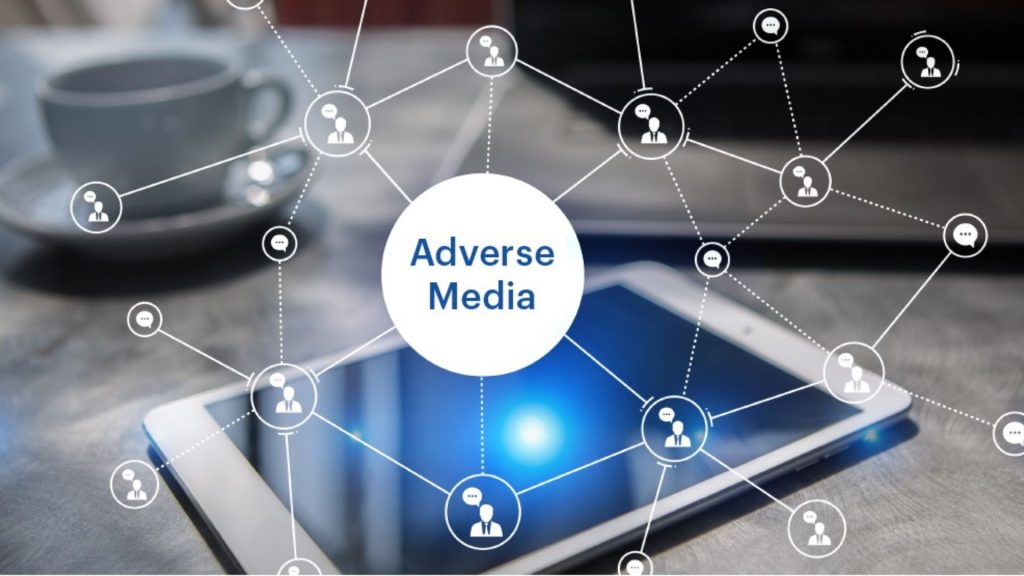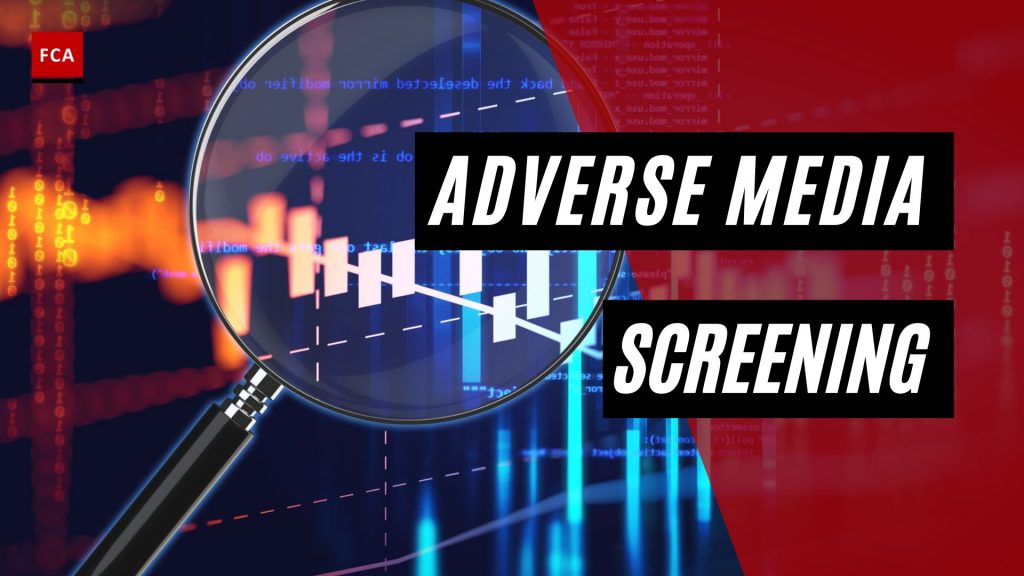The adverse media screening. Unfavorable news or adverse media may be described as any negative information about a person or group of people that is published, revealed, or discovered on any publicly available and accessible channel.
Adverse media screening is an important part of customer or third-party due diligence processes because it identifies risks indicating a party’s potential involvement in alleged criminal activity, which could result in financial, reputational, or other types of risks to your business.

Adverse Media Screening
There’s a chance that bank customers are involved in illegal behavior or have ties to criminal organizations, including money launderers. Customers in the bank’s high-risk group face an even greater danger. Therefore, banks conduct frequent and continuing surveillance of client transactions and activities, including looking for customers’ names and profiles in unfavorable news or on different negative media portals.
An appropriate adverse media check may highlight or expose a bank’s customer being involved in prohibited or illegal activities such as money laundering, terrorist financing, fraud, organized crime, racketeering, and so on.
The risk-based approach (or RBA) to transaction and activity monitoring is a proactive technique for assessing and evaluating client risks and ensuring that activities are related to the original due diligence information obtained from the customer at the time of establishing a connection. The RBA requires banks to do due diligence based on the client’s risk profile, which implies that the higher the risk, the more thorough the initial examination and continuing surveillance of the consumer. Clients who have been designated as high-risk customers, such as politically exposed persons (or PEPs), non-governmental organizations (or NGOs), non-profit organizations, or philanthropic organisations, face a greater risk. For these high-risk customers, the bank is obligated to perform EDD processes.
Performing regular adverse media or negative news checks against the customers plays an important part during transaction monitoring. Banks perform ongoing transaction monitoring to identify, verify, and maintain the customers’ current information and risk profiles. Periodic monitoring, including adverse media checks, helps in periodicly assessing risks that customers may be involved in any money laundering or criminal activity. Such periodic monitoring and media checks help the AML team in maintaining the updated information of the customers and highlighting any issues found in customers’ accounts or activities.
Importance Of Adverse Media Or Negative News Searches
There is a risk that a customer, especially the high-risk category customer of the bank, may be involved in illegal or prohibited activities. A customer’s involvement in illegal or prohibited activities may occur after opening a bank account and establishing a relationship with the bank.
Therefore, the bank is required to periodically monitor and assess the transactions, activities, and business relationships with customers and perform negative news searches for the customers, especially high-risk customers of the bank.
Such periodic negative news searches may highlight the current or potential involvement of a customer in illegal or prohibited activities; therefore, appropriate analysis and investigation by the AML team and senior management of the bank are performed. Risk ratings of the customer may need revisions based on relevant negative media searches and results, such as a news item accusing the customer of fraud may increase the risk rating of such customer in the bank’s record. The negative news necessitates the investigation of the beneficial owners as well.

Due to the lack of specific guidance for screening customers against negative media, the banks define an appropriate risk-based model where negative media sources and portals are identified as minimum negative news sources. Various adverse media sources may be utilized by the bank’s Anti Money Laundering (or AML) officer or AML team to search for and identify any negative news about any particular customer or customers of the bank, especially the high-risk category customers.
The adverse media news sources may be: print media including newspapers, magazines, or other news sources; websites or web articles that publish material related to financial frauds, criminal activities, corruption, rackets, and so on, (such information may also be found on social media websites, blogs, and various discussion forums; and negative news databases maintained and provided by specialist and international organizations.
To effectively perform and conduct ongoing EDD measures to monitor the business relationships, transactions, and activities of the high-risk customers such as PEPs, the AML team of the bank is required to identify the negative media search sources to run searches for negative news items about any particular customer or customers of the bank.
Searching For Adverse Media News
AML team or officer while performing AML or CFT monitoring for high-risk customers shall scan the negative media sources mentioned above logically and sequentially. To search for the negative media about any particular customer the AML officer must understand the purpose of the search what information is required to run the searches and at what negative media sources and platforms.
Final Thoughts
One of the most common types of negative information is an individual’s previous criminal activity. If it is suspected that a person is involved in financial crime and authorities discover that person has previously been arrested for another crime, authorities have even more reason to suspect that person is involved.
In contrast, if a person has no criminal history and is not known to associate with people who do, they are much less likely to be involved in something like a money laundering scheme.








